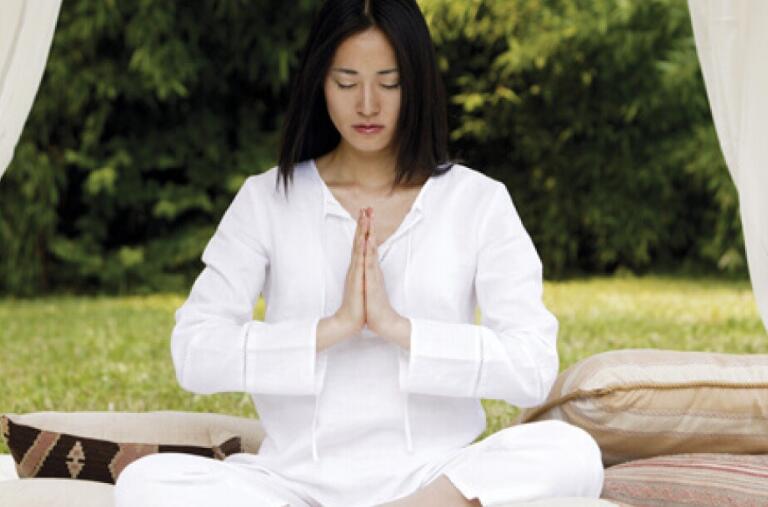People are often confused about the difference between meditation and prayer because they both involve focus and concentration.
The big difference between meditation and prayer is that prayer is outward speaking, while meditation is inward listening.
To put it clearer, meditation is about focusing inward and listening to your own thoughts and feelings, while prayer is about communicating with a higher power or deity.
It is important to figure out the difference between meditation and prayer since they can be used for different purposes.
If you would like to learn more about the difference between meditation and prayer, or if you are unsure which practice is right for you, please keep reading for more information.
What Is Prayer?

In religious contexts, prayer is a form of communication with a deity or other spiritual entity. Prayer may be done as part of a ritual, or it may be done spontaneously. Prayer often involves asking for guidance, help, or protection.
So you can consider prayer as:
- a conversation with God
- a way to build a relationship with God
- a way to ask God for help or guidance
- a way to praise or thank God
- a way of communicating our thoughts and feelings to God
There are many different types of prayer, but they all have one thing in common: the act of communicating with a deity. This can be done in a number of ways, including speaking out loud, reciting specific prayers or mantras, singing, or simply thinking about the divine.
Some people pray for guidance, while others pray for healing or protection. But the specifics of how prayer works depend on the faith tradition involved.
For example, in Christianity, Catholics believe that the intercession of saints can help to answer prayers. In Islam, Muslims may pray anywhere at any time.
However, they are required to perform ablutions (a cleansing ritual) beforehand. Jews traditionally pray three times a day: morning, afternoon and evening.
Prayer can be performed individually or as part of a group. It can be done at set times or spontaneously. Some people pray for specific requests, while others simply use prayer as a way to connect with their chosen deity. No matter how it is done, prayer is an important part of many people’s lives.
Misunderstanding of prayer
Some people may misunderstand prayer as a way to magically change their circumstances.
They may think that they will get what they want if they pray hard enough.
However, prayer is not a guarantee for getting what you want. It is more about building relationships with a higher power and opening up communication.
Prayer is also not just for people of religious faith. Anyone can pray, regardless of their beliefs.
Prayer can be a way to connect with something larger than ourselves and to find peace and solace in difficult times.
What Is Meditation?

In its simplest form, meditation is a mindfulness practice that helps us become more aware of our thoughts and emotions.
By calming the mind and focusing on our breath, we’re better able to sift through our thoughts and see which are helpful and which aren’t.
In other words, it’s a practice that helps us connect with our inner thoughts and feelings to understand ourselves better.
Meditation has also been shown to reduce stress and anxiety levels. If you’re someone who tends to worry a lot or gets easily overwhelmed by life’s challenges, regular meditation can help you learn to manage your stress more productively.
Studies have shown that meditation can lower blood pressure, improve sleep quality, reduce inflammation, and even boost the immune system.
If you’re looking for a natural way to improve your overall health and well-being, adding a regular meditation practice to your routine is a great place to start.
Misunderstanding of mediation
Meditation is often misunderstood. People think that in order to meditate, you have to sit cross-legged on the floor, wear loose clothing, and chant “ommmmm” for hours on end.
In fact, one of the best ways to meditate is to focus on your breath simply. And you don’t even need to be sitting down to do it. You can be walking, running, or even lying in bed.
Differences in Reasons You Practice
Prayer is about talking to God and trying to change something in the external world.
Whether you’re praying for a loved one’s health or world peace, the goal is to petition a higher power for help.
So, the reason you praper is to express gratitude for the good in your life and ask for help with the challenges you’re facing.
Meditation, on the other hand, is about listening to God and trying to understand your own mind and how it works.
The goal is to become more aware of your thoughts and feelings so that you can see the patterns that emerge.
So, you practice meditation to clear your mind of daily life’s noise and distractions and simply be present at the moment.
Of course, there’s no right or wrong way to pray or meditate. Most importantly, you’re doing something to focus on your well-being and connect with your higher power.
Differences in Ways/Methods You Practice Them

Here’s a look at the differences between prayer and meditation and how to ensure you’re doing each correctly.
How to Pray?
Prayer is a conversation with God. It’s a time to express your deepest desires, ask for guidance, and give thanks.
You can pray out loud or silently, in a group or alone, kneeling or standing—whatever feels right to you. The important thing is that you are sincere in your intentions.
If you’re new to prayer, start by simply talking to God as you would a friend. Pour out your heart, express your joys and concerns, and ask for guidance. As you become more comfortable praying, you may want to try some of the following methods:
The Lord’s Prayer:
This Christian prayer, which Jesus taught his disciples, is probably the most well-known prayer in the world.
If you were raised in a Christian household, chances are you learned it at a young age. The Lord’s Prayer begins with “Our Father” and asks for forgiveness, deliverance from temptation, and grace in times of trial.
Novenas:
A novena is a nine-day period of prayer dedicated to a specific intention, such as healing from an illness or finding a job. Novenas can be prayed individually or as part of a group.
Liturgical prayers:
Liturgical prayers are those said during religious ceremonies like Mass or Communion.
How to Meditate?
There are many different ways to meditate. Some people prefer to sit quietly with their eyes closed while others walk or even dance.
What matters most is that you find a method that works for you.
Here are a few popular types of meditation:
Mindfulness meditation:
Mindfulness meditation involves being aware of your thoughts and surroundings without passing judgment.
To practice mindfulness meditation, find a comfortable place to sit or lie down. Close your eyes and take several deep breaths.
Then simply focus on your breath going in and out. Allow your thoughts to come and go without holding on to them. If your mind wanders, gently bring it back to your breath.
You may want to set a timer so you don’t have to worry about the time while you’re meditating. Start with five minutes and work up to longer periods as you get more comfortable with the practice.
Guided meditation:
Guided meditation involves following along with someone else’s voice as they lead you through the practice.
Many people find guided meditations helpful when they’re first getting started because it can be difficult to silence the mind without some assistance.
Plenty of guided meditations are available online or through apps like Headspace and Calm.
Choose one that resonates with you and hit play..Then simply relax and let the guide do the work.
Transcendental Meditation (TM):
TM is perhaps the best-known form of meditation due largely in part to its celebrity devotees like Oprah Winfrey and David Lynch.
TM involves repeating a mantra—a word or phrase that is chanted over and over again—to help quiet the mind.
Before beginning TM, you must choose a mantra with the help of a certified instructor.
After choosing your mantra, find a comfortable place to sit with your eyes closed.
Then repeat your mantra throughout the session while allowing other thoughts to come into your mind without attaching yourself to them. A typical TM session lasts 20 minutes twice per day.
More Differences to Compare

There are some key differences between prayer and meditation that are worth noting. Here are a few of the most notable ones:
- Prayer is typically done aloud, while meditation is usually done in silence.
- Prayer is focused on petitioning God for guidance or help, while meditation is more about being present in the moment and connecting with your inner thoughts and feelings.
- Prayer can be done anywhere, at any time, while meditation typically requires a more serene setting free from distractions.
- Prayer is often done in groups, while meditation is typically a solo activity.
- Prayer is typically shorter in duration than meditation, which can be practiced for anywhere from a few minutes to an hour or more.
Conclusion
Prayer and meditation are two vital spiritual practices that can help us connect with the divine — but they are not the same thing.
Prayer is focused on making requests of God or another higher power whereas meditation is focused about quieting the mind and connecting with our inner thoughts and feelings.
Both practices are beneficial in their own ways; it’s up to you to decide which one (or both) best resonate with you spiritually!
